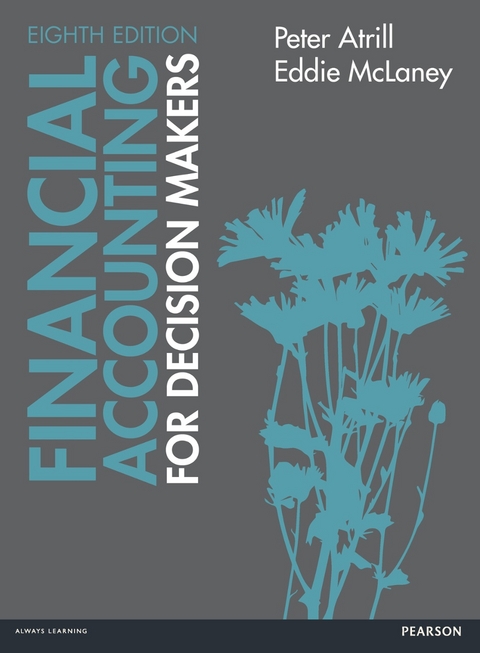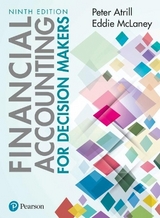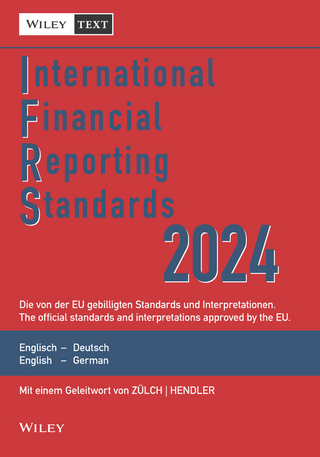
Financial Accounting for Decision Makers 8th edn
Pearson Education Limited (Verlag)
978-1-292-09904-0 (ISBN)
- Titel erscheint in neuer Auflage
- Artikel merken
Peter Atrill is a freelance academic and author working with leading institutions in the UK, Europe and SE Asia. He was previously Head of Accounting and law and Head of Business and Management at the Plymouth University Business School Eddie McLaney is Visiting Fellow in Accounting and Finance at Plymouth University.
CONTENTS
Preface
How to use this book
Acknowledgements
1 Introduction to accounting
Introduction
Learning outcomes
What is accounting?
Who are the users of accounting information?
The conflicting interests of users
How useful is accounting information?
Providing a service
Weighing up the costs and benefits
Accounting as an information system
Management accounting and financial accounting
Scope of this book
The changing face of accounting
Accounting for business
What is the purpose of a business?
What kinds of business ownership exist?
How are businesses organised?
The quest for wealth creation
Meeting the needs of other stakeholders
Balancing risk and return
Reasons to be ethical
Not-for-profit organisations
Summary
Key terms
References
Further reading
Review questions
2 Measuring and reporting financial position
Introduction
Learning outcomes
The major financial statements – an overview
The statement of financial position
The effect of trading transactions
Classifying assets
Classifying claims
Statement layouts
Capturing a moment in time
The role of accounting conventions
Money measurement
Valuing assets
Meeting user needs
Self-assessment question
Summary
Key terms
Review questions
Exercises
3 Measuring and reporting financial performance
Introduction
Learning outcomes
The income statement
Different roles
Income statement layout
Further issues
Recognising revenue
Recognising expenses
Profit, cash and accruals accounting
Depreciation
Costing inventories
Trade receivables problems
Uses and usefulness of the income statement
Self-assessment question
Summary
Key terms
Further reading
Review questions
Exercises
4 Accounting for limited companies (1)
Introduction
Learning outcomes
The main features of limited companies
Legal safeguards
Public and private companies
Taxation
The role of the Stock Exchange
Capital market efficiency
Managing a company
Financing limited companies
Share capital
Reserves
Bonus shares
Share capital jargon
Borrowings
Raising share capital
Withdrawing equity
The main financial statements
Dividends
Self-assessment question
Summary
Key terms
References
Further reading
Review questions
Exercises
5 Accounting for limited companies (2)
Introduction
Learning outcomes
The directors’ duty to account
The need for accounting rules
Sources of accounting rules
Problems with standards
Accounting rules or accounting choice?
The need for a conceptual framework
The IASB framework
The auditors’ role
The framework of annual financial reports
Presenting the financial statements
Management commentary
Directors’ report
Strategic report
Accounting standards and accounting policies
Creative accounting
Self-assessment question
Summary
Key terms
References
Further reading
Review questions
| Verlagsort | Harlow |
|---|---|
| Sprache | englisch |
| Maße | 195 x 266 mm |
| Gewicht | 1127 g |
| Themenwelt | Schulbuch / Wörterbuch ► Schulbuch / Berufs- und Fachschule |
| Wirtschaft ► Betriebswirtschaft / Management ► Rechnungswesen / Bilanzen | |
| Wirtschaft ► Betriebswirtschaft / Management ► Unternehmensführung / Management | |
| ISBN-10 | 1-292-09904-6 / 1292099046 |
| ISBN-13 | 978-1-292-09904-0 / 9781292099040 |
| Zustand | Neuware |
| Haben Sie eine Frage zum Produkt? |
aus dem Bereich



